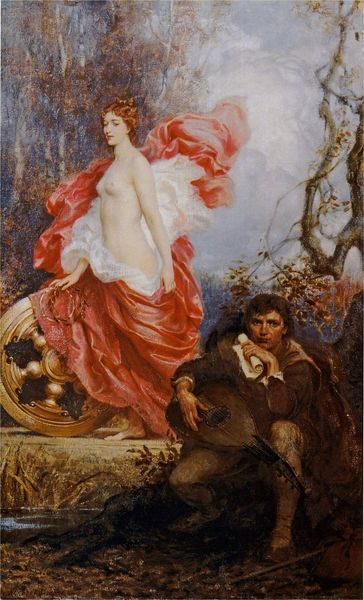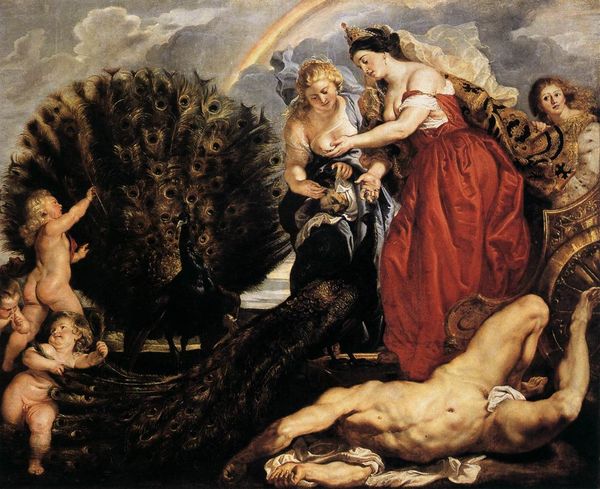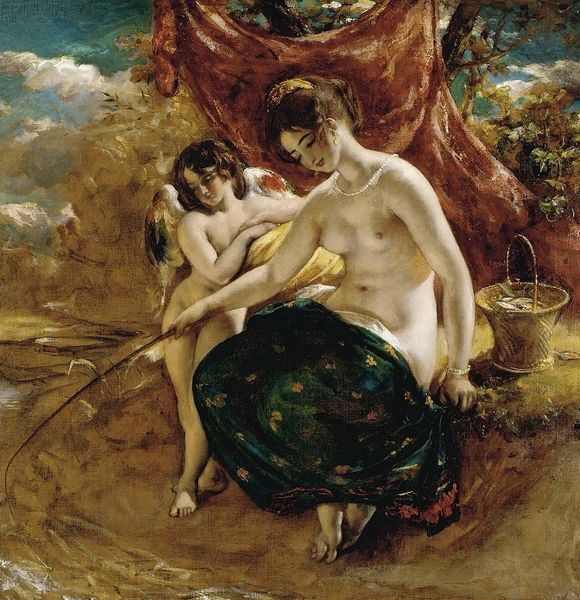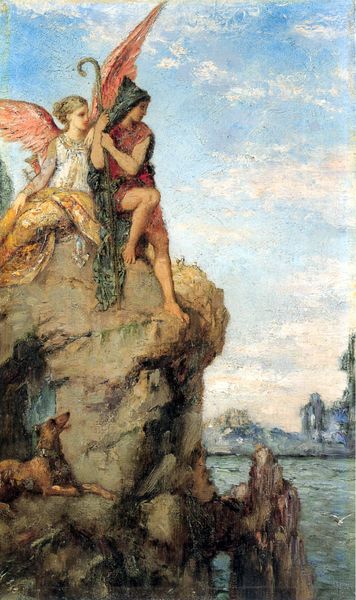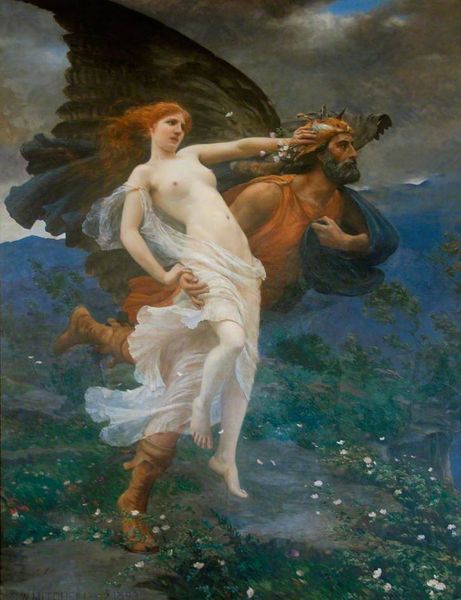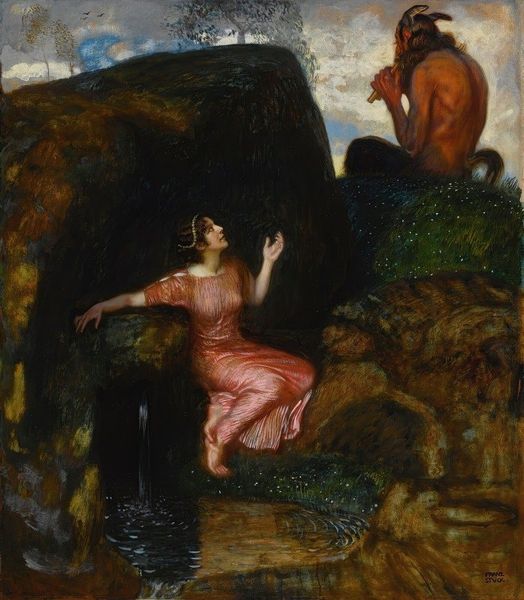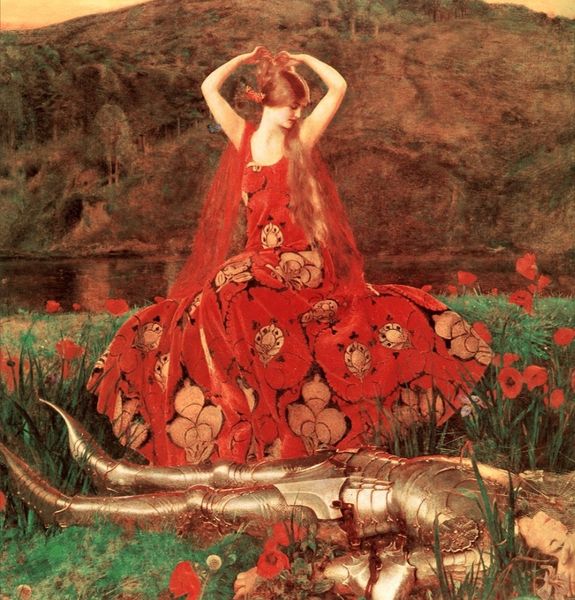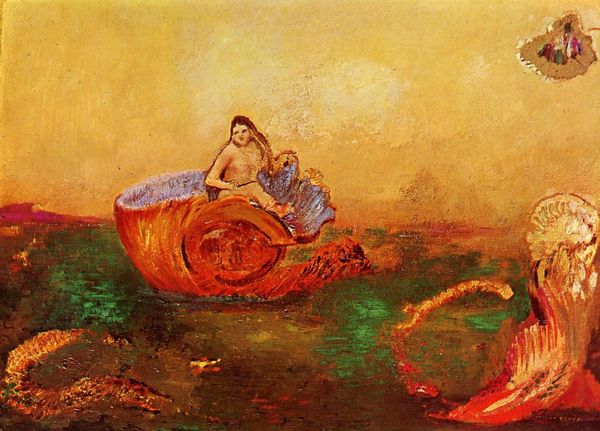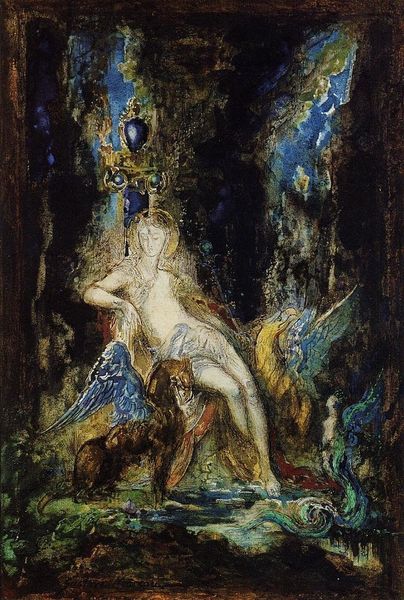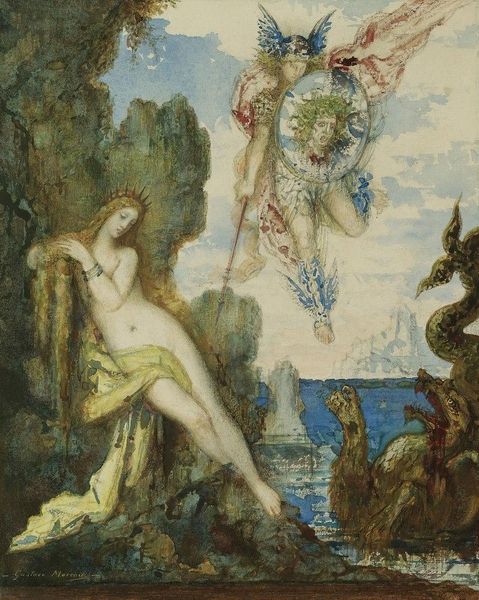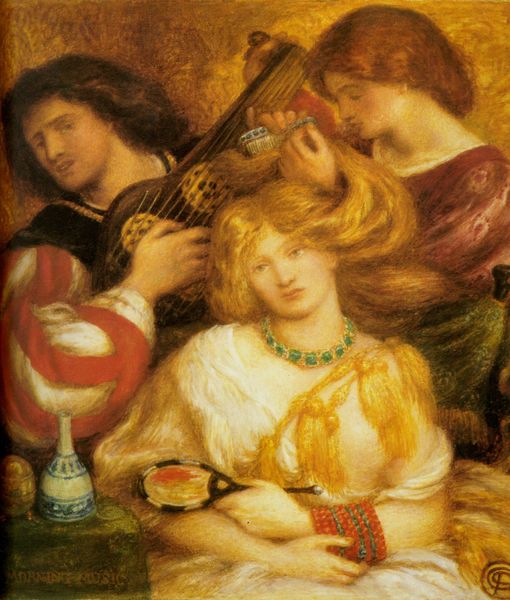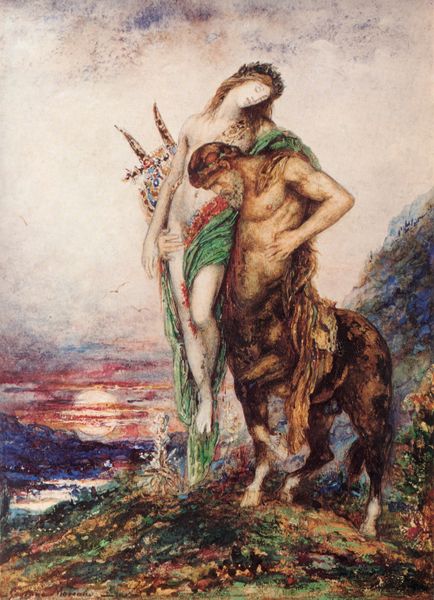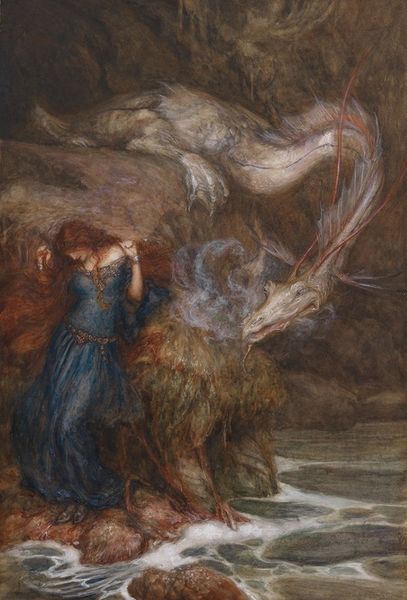
Angelika, guarded by a dragon (Angelica and Ruggiero) 1872
0:00
0:00
Copyright: Public domain
Editor: Here we have Arnold Böcklin’s "Angelika, guarded by a dragon," painted in 1872. It strikes me as quite theatrical, this dramatic confrontation, almost like a stage set. What elements stand out to you in this piece? Curator: What I find compelling is how Böcklin, within this fantastical scene, is engaging with the established tradition of mythological painting, but also subtly critiquing its societal role. Consider the dragon. Typically, it’s a symbol of untamed nature, something to be overcome. Yet, it's positioned almost protectively around Angelika. What statement might Böcklin be making about the woman's role here and how art portrays it? Editor: That's interesting, I hadn't considered the dragon's role that way. Is he subverting the idea of the damsel in distress, then? Curator: Potentially. Romanticism, as a movement, often challenged Enlightenment ideals, and Böcklin fits into that mold. He's not simply illustrating a mythological story; he's inviting us to question the power dynamics within it. The male rescuer looms large, certainly, but the gaze of Angelika seems almost knowing, aware. Consider how institutions shape how such narratives are re-presented through time; are these perspectives of powerful characters retained, subverted, or both? Editor: It’s almost as if she's not entirely helpless, or maybe she understands more about her predicament than we initially assume. Thinking about its presence in a place like the Alte Nationalgalerie – is this positioning supposed to teach us a specific view on traditional ideas about powerful characters? Curator: Exactly. Museums inevitably shape the narrative around artworks. Displaying this painting asks us to consider how we continue to interpret stories of heroism, captivity, and female agency through both historical and modern societal lenses. Böcklin is forcing a conversation, it would seem, even now. Editor: This has really changed how I see the piece, thinking about its role beyond just an illustration. Thanks! Curator: My pleasure. It’s rewarding to view how artists engaged in visual commentary that continue to inspire, and occasionally disturb us even today.
Comments
No comments
Be the first to comment and join the conversation on the ultimate creative platform.
